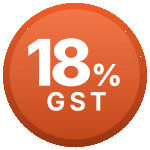Atecard D Tablet 15's
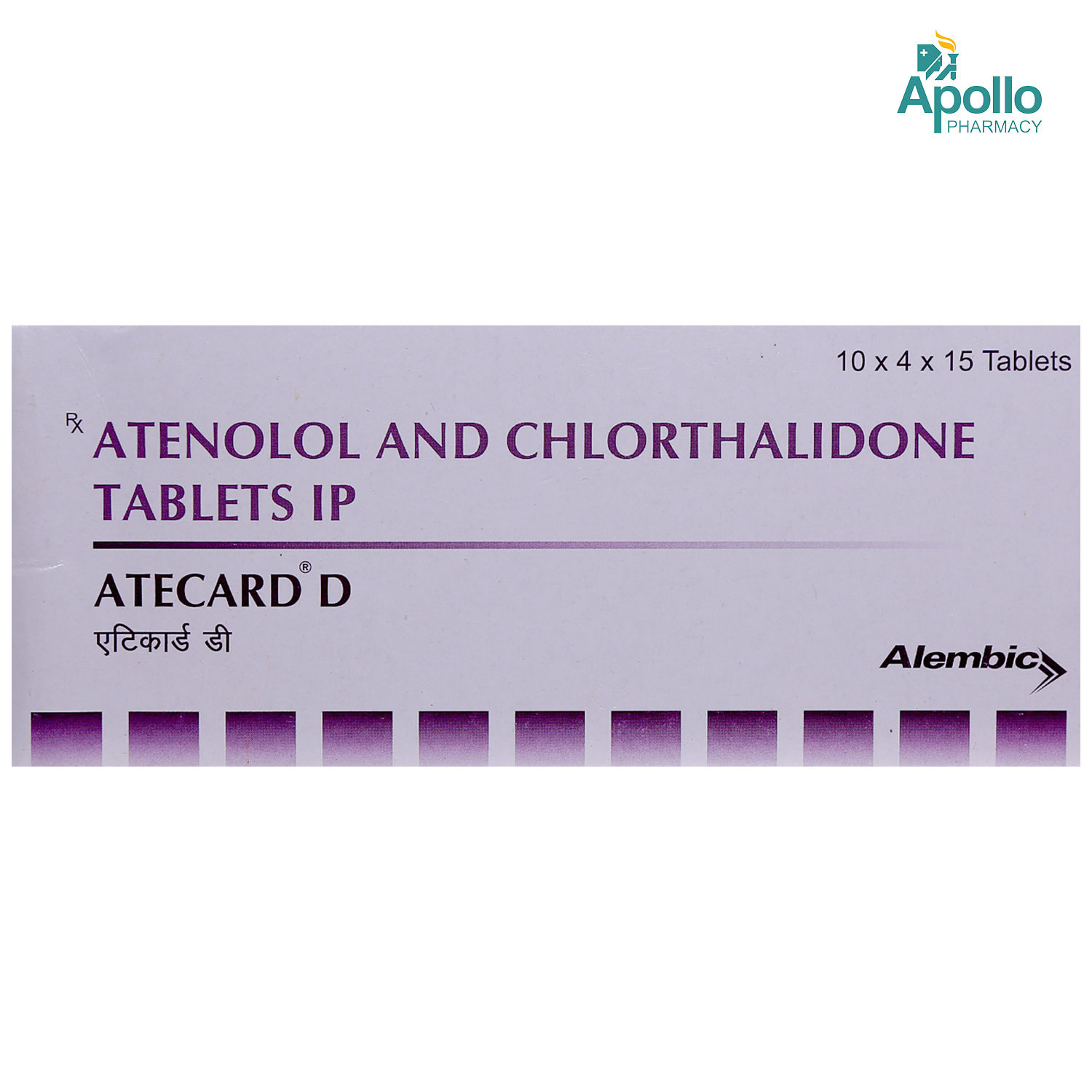
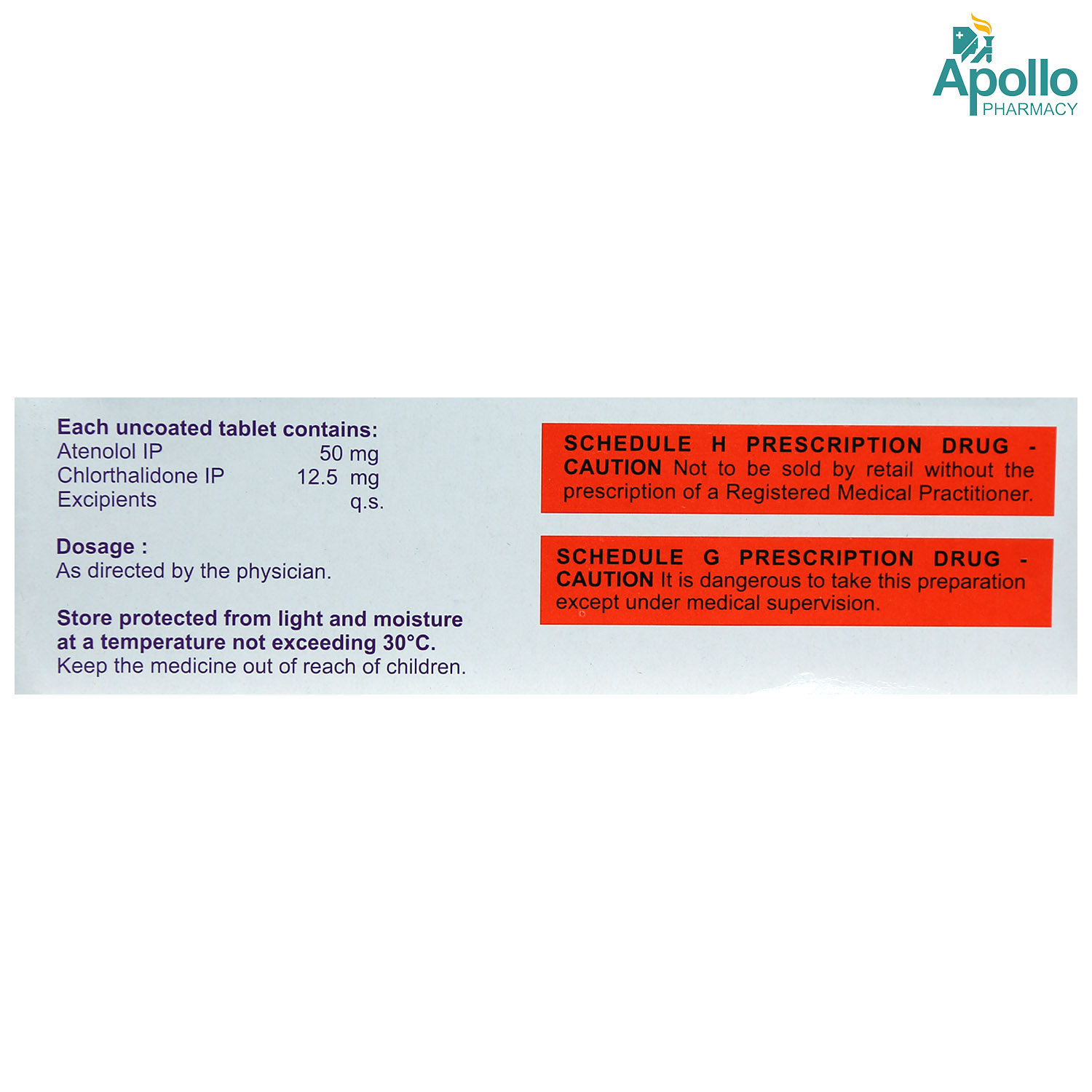
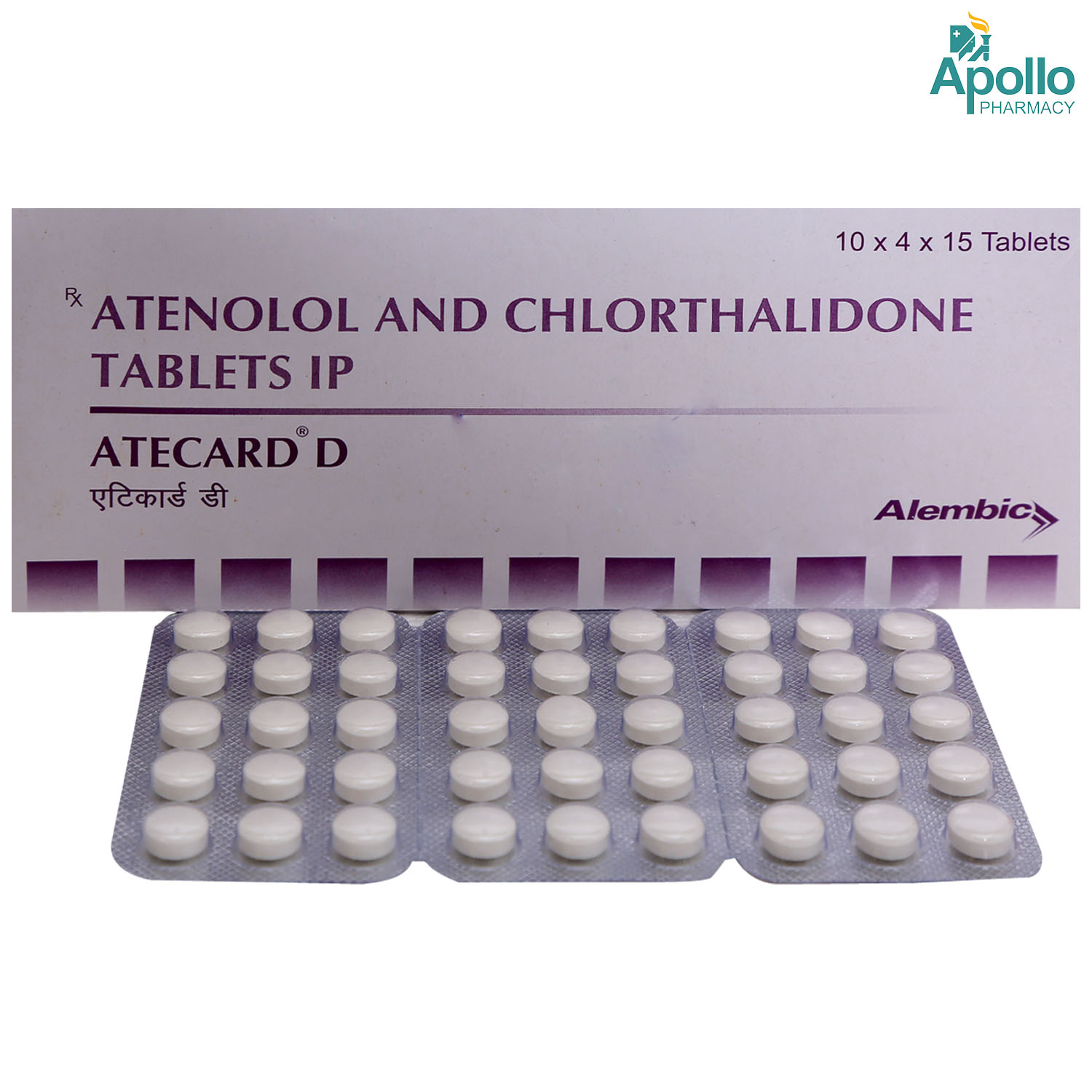
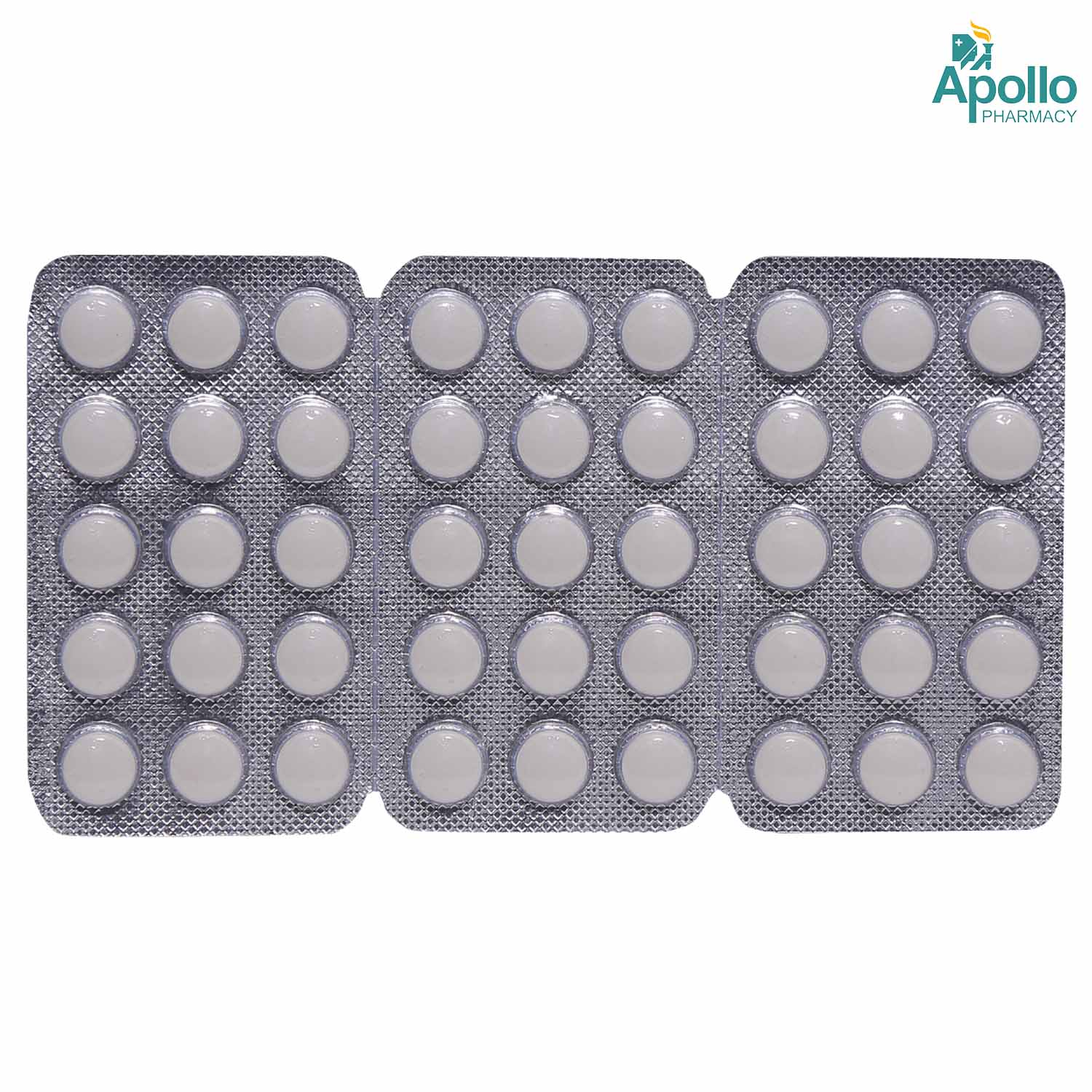
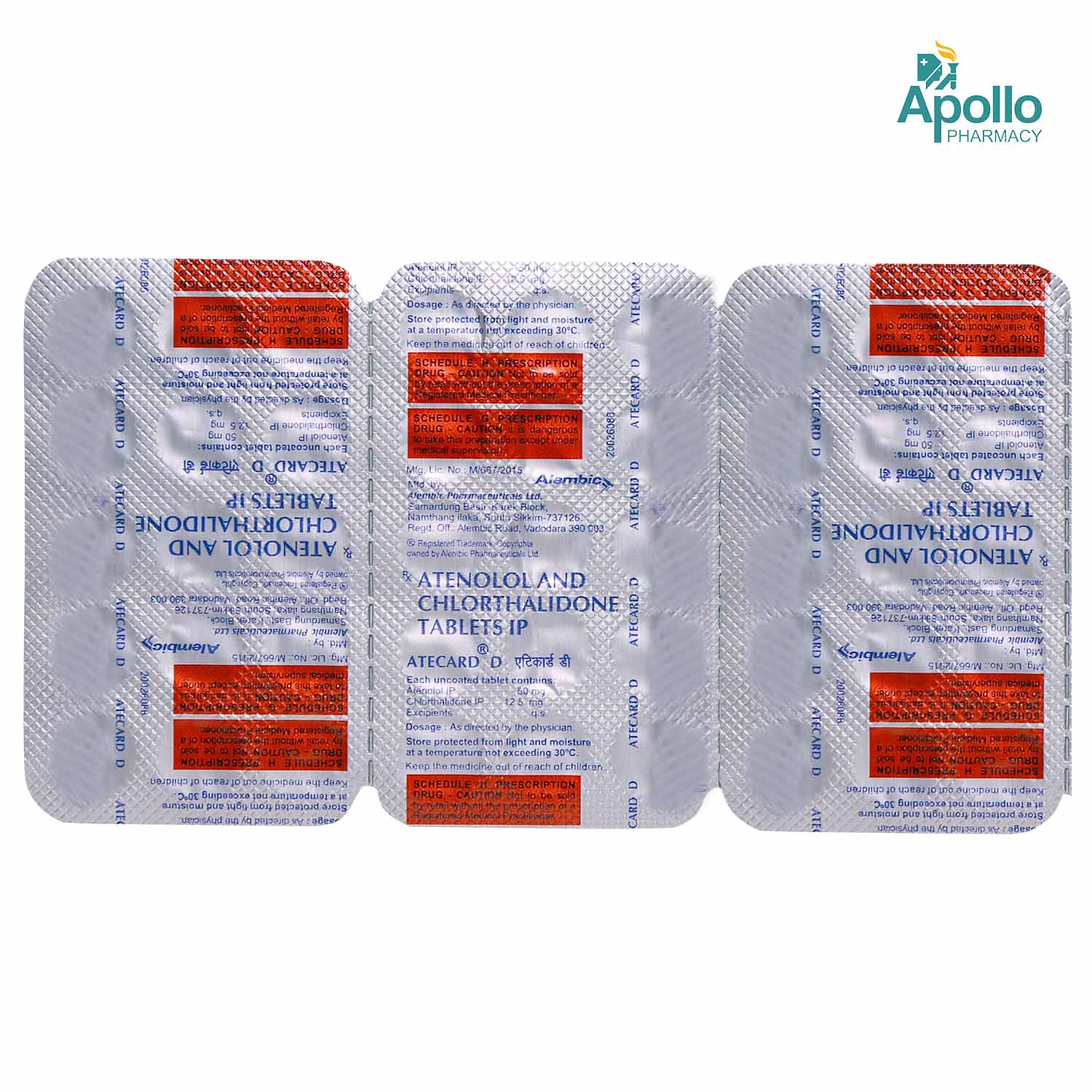





MRP ₹87.5
(Inclusive of all Taxes)
₹13.1 Cashback (15%)
Selected Pack Size:15
15 ₹78.8
(₹5.25 per unit)
In Stock
14 ₹54.45
(₹3.89 per unit)
Out of stock
Provide Delivery Location
Online payment accepted
 Prescription drug
Prescription drugWhats That
Composition :
Manufacturer/Marketer :
Consume Type :
Expires on or after :
Return Policy :
About Atecard D Tablet
Atecard D Tablet belongs to the class of medicines called 'antihypertensive agents' used to treat high blood pressure. Hypertension is a chronic medical condition when blood pressure is too high. Blood pressure is the measurement of the force that the heart uses to pump blood to all body parts. If the blood pressure becomes uncontrolled, it may cause serious heart diseases like brain damage (stroke), heart attack, and kidney failure.
Atecard D Tablet contains Atenolol and Chlorthalidone. Atenolol is a beta-blocker that acts by altering the response to nerve impulses in the heart. Consequently, the heart beats slower and lowers the blood pressure. Chlorthalidone is a diuretic (water pill) that reduces the amount of water (fluid) in the body by boosting the volume of urine produced by the kidneys, which helps to lower blood pressure. As a result, Atecard D Tablet aids in blood pressure regulation.
Take Atecard D Tablet as prescribed. Some people may experience low heart rate (slower-than-expected heart rate), cold extremities, diarrhoea, nausea, and fatigue (feeling tired). Most of these side effects do not need medical treatment and fade away with time. If the side effects persist or worsen, consult the doctor.
Do not take Atecard D Tablet if you are allergic to atenolol, chlorthalidone, or any other ingredients in this medication, or if you have ever had second or third-degree heart block, very slow or uneven heartbeats, severe kidney disorder, metabolic acidosis (higher than normal levels of acid in the blood), or phaeochromocytoma (a tumour of adrenal glands). It is not recommended to take Atecard D Tablet if you are pregnant or breastfeeding. Please inform your doctor if you are taking any other medications or are allergic to any medications. Atecard D Tablet should not be given to children.
Uses of Atecard D Tablet
Directions for Use
Key Benefits
Atecard D Tablet belongs to the class of medicines called 'antihypertensive agents' used to treat high blood pressure. Atecard D Tablet contains Atenolol and Chlorthalidone. Atenolol is a beta-blocker that acts by altering the response to nerve impulses in certain regions of the body, such as the heart. Consequently, the heart beats slower and lowers the blood pressure. When blood pressure is reduced, the amount of blood and oxygen delivered to the heart increases. On the other hand, Chlorthalidone is a diuretic (water pill) that reduces the amount of water (fluid) in the body by boosting the volume of urine produced by the kidneys, which helps to lower blood pressure. As a result, Atecard D Tablet aids in blood pressure regulation.
Storage
- Talk to your doctor about oral potassium supplements.
- Eat potassium rich foods such as bananas, avocados, oranges, dark leafy greens, beans and peas, fish, spinach, milk and tomatoes.
- Inform your doctor if you have an underlying condition, like kidney disease or heart failure, contributing to the imbalance.
- Eat a balanced diet with potassium (bananas, spinach), sodium (salt, soy sauce), calcium (dairy, leafy greens), and magnesium (nuts, dark chocolate).
- Drink electrolyte-rich beverages like sports drinks (Gatorade, Powerade), coconut water, and fresh vegetable juice.
- Stay hydrated throughout the day by drinking lots of water.
- Avoid excessive intake of sugary, salty, and unhealthy fatty foods.
- If you have a persistent electrolyte imbalance after making dietary and lifestyle modifications, get medical help.
- Inform your doctor about your constipation symptoms. They may adjust your medication or advise alternative treatments.
- Stay hydrated by drinking sufficient of water (at least 8-10 glasses a day) to help soften stool and promote bowel movements.
- Increase fibre intake by eating foods high in fibre, such as fruits, whole grains, vegetables and legumes, to help bulk up the stool.
- Establish a bowel routine by trying to go to the bathroom at the same time each day to train your bowels.
- Engaging in regular exercise, like walking or yoga, can support in bowel movement stimulation.
- Consult your doctor if constipation persists, and discuss alternative treatments or adjustments to your medication.
- Drink plenty of water throughout the day to prevent dehydration-induced muscle cramps and spasms.
- Include magnesium and potassium-rich foods like bananas, leafy greens, almonds, avocados, and sweet potatoes in your diet to help relax muscles.
- Perform gentle stretches for affected muscle groups multiple times a day, especially before and after
- Engage in activities like swimming, walking, or yoga to maintain muscle flexibility and range of motion.
- Stay in a comfortable environment and avoid exposure to excessive heat or cold, which can worsen spasticity.
- Apply heat or cold packs to affected areas as needed, depending on your individual response.
- Aim for adequate sleep to support muscle recovery.
- Adjust your sleeping position to minimize muscle tension.
- Practice deep breathing exercises, meditation, or progressive muscle relaxation to manage stress.
- Hydrate your body: Drink enough water to prevent dehydration and headaches.
- Calm Your Mind: Deep breathing and meditation can help you relax and relieve stress.
- Rest and Recharge: Sleep for 7-8 hours to reduce headache triggers.
- Take rest: lie down in a quiet, dark environment.
- Cold or warm compresses can help reduce tension.
- Stay Upright: Maintain good posture to keep symptoms from getting worse.
- To treat headaches naturally, try acupuncture or massage therapy.
- Over-the-counter pain relievers include acetaminophen and ibuprofen.
- Prescription Assistance: Speak with your doctor about more substantial drug alternatives.
- Severe Headaches: Seek emergency medical assistance for sudden, severe headaches.
- Frequent Headaches: If you get reoccurring headaches, consult your doctor.
- Headaches with Symptoms: Seek medical attention if your headaches include fever, disorientation, or weakness.
- Restlessness is related to mental health and needs medical attention if it's severe.
- Regular practice of meditation and yoga can help calm your mind. This can reduce restlessness.
- Prevent smoking as it can impact your calmness of body and mind.
- Talk to your friends and family about restlessness, who can provide a solution for why you feel restless.
- Get sufficient sleep for a minimum of 6-7 hours to reduce restlessness.
Drug Warnings
Do not take Atecard D Tablet if you are allergic to atenolol, chlorthalidone, or any other ingredients in this medication, or if you have ever had second or third-degree heart block, very slow or uneven heartbeats, severe kidney disorder, metabolic acidosis (higher than normal levels of acid in your blood), or phaeochromocytoma. If you have asthma or wheezing, consult your doctor before using this medication. It is not recommended to take Atecard D Tablet if you are pregnant or breastfeeding. Please inform your doctor if you are already taking any other medications or are allergic to any medications. Atecard D Tablet is not recommended in children as the safety and efficacy of Atecard D Tablet in children have not been established.
Drug-Drug Interactions
Drug-Drug Interactions
Login/Sign Up
Co-administration of Atecard D Tablet and cisapride may increase the risk or severity of an irregular heart rhythm that may be serious.
How to manage the interaction:
Taking Atecard D Tablet with Cisapride is not recommended, please consult your doctor before taking it. Do not discontinue the medication without consulting a doctor.
Taking verapamil with Atecard D Tablet can increase the risk or severity of verapamil side effects.
How to manage the interaction:
Taking Atecard D Tablet and Verapamil together can result in an interaction, it can be taken if a doctor has advised it. However, if you experience, fatigue, headache, fainting, swelling of the extremities, weight gain, shortness of breath, chest pain, increased or decreased heartbeat, or irregular heartbeat, contact a doctor immediately. Do not discontinue any medications without consulting a doctor.
Using dolasetron together with Atecard D Tablet can increase the risk of an irregular heart rhythm that may be serious.
How to manage the interaction:
Although there is a possible interaction between Atecard D Tablet and Dolasetron, you can take these medicines together if prescribed by a doctor. If you have any of these symptoms, like feeling dizzy, lightheaded, or your heart beating irregularly, it's important to call a doctor right away. Do not stop using any medications without talking to a doctor.
Coadministration of Atecard D Tablet with aminophylline could certainly reduce the efficacy of Atecard D Tablet and enhance the effects of aminophylline.
How to manage the interaction:
Taking Atecard D Tablet alongside aminophylline can result in an interaction, it can be taken if a doctor has advised it. However, if you experience nausea, vomiting, insomnia, tremors, restlessness, uneven heartbeats, or difficulty breathing, contact a doctor immediately. Do not discontinue any medications without consulting a doctor.
Using Atecard D Tablet with theophylline, could increase the effects of theophylline.
How to manage the interaction:
Taking Atecard D Tablet and theophylline together can result in an interaction, it can be taken if a doctor has advised it. However, if you experience nausea, vomiting, insomnia, shaking of hands and legs, restlessness, uneven heartbeats, or difficulty breathing, contact the doctor immediately. Do not discontinue any medications without consulting a doctor.
Coadministration of Atecard D Tablet and Nebivolol may increase the risk of irregular heart rhythm.
How to manage the interaction:
Taking Atecard D Tablet and Nebivolol together can result in an interaction, it can be taken if a doctor has advised it. Do not discontinue any medications without consulting a doctor.
When Bisoprolol is combined with Atecard D Tablet the severity or risk of side effects may be increased.
How to manage the interaction:
Although there may be an interaction, Atecard D Tablet can be taken with bisoprolol if prescribed by the doctor. Consult the prescriber if you experience any unusual side effects. Do not discontinue the medication without consulting a doctor.
Coadministration of Atecard D Tablet with ceritinib can slow heart rate and increase the risk of an irregular heart rhythm.
How to manage the interaction:
Taking Atecard D Tablet and ceritinib together can result in an interaction, it can be taken if a doctor has advised it. However, if you experience dizziness, lightheadedness, fainting, or an irregular heartbeat while taking these medications, consult the doctor immediately. Do not discontinue any medications without consulting a doctor.
Coadministration of Tizanidine and Atecard D Tablet can increase the risk or severity of side effects like low blood pressure.
How to manage the interaction:
Taking Atecard D Tablet and tizanidine together may result in an interaction, it can be taken if your doctor has recommended it. However, if you experience headache, dizziness, lightheadedness, sweating, or palpitations, consult the doctor. Do not discontinue any medications without consulting a doctor.
The use of atazanavir with Atecard D Tablet may raise the risk of an abnormal heart rhythm.
How to manage the interaction:
The combination of Atecard D Tablet and acebutolol may result in an interaction, it can be taken if a doctor has advised it. However, if you develop sudden dizziness, lightheadedness, fainting, or irregular heartbeat, contact the doctor immediately. Do not stop using any medications without a doctor's advice.
Drug-Food Interactions
Drug-Food Interactions
Login/Sign Up
Diet & Lifestyle Advise
- Regular exercise reduces blood pressure by supporting the health of your heart and blood vessels.
- Eat healthy by consuming plenty of fruits and vegetables, whole grains, fat-free or low-fat dairy products, and lean proteins.
- Stop smoking since it raises your heart rate and blood pressure.
- Reduce alcohol consumption as it elevates blood pressure and worsens heart failure.
- Chronic stress should be avoided because it can raise your blood pressure. To cope with stress and practise mindfulness techniques, try to appreciate and spend time with your loved ones.
- Include heart-healthy omega-3 fatty acid-containing foods & beverages in your daily diet.
- Limit the intake of table salt in your regular diet.
Side Effects of Atecard D Tablet
- Low pulse rate
- Cold extremities (Cold hands and feet)
- Diarrhoea
- Nausea
- Fatigue (feeling tired)
- Weakness
- Vomiting
- Cramps
Habit Forming
Therapeutic Class
All Substitutes & Brand Comparisons
RX
Out of StockAtecard-D Tablet 14's
Alembic Pharmaceuticals Ltd
₹60.5
(₹3.89 per unit)
25% CHEAPERRX
Tenoclor 50 Tablet 15's
Abbott India Ltd
₹131.5
(₹7.71 per unit)
46% COSTLIERRX
Tenoric-50 Tablet 10's
Ipca Laboratories Ltd
₹103.5
(₹9.32 per unit)
77% COSTLIER
Product Substitutes
Author Details
We provide you with authentic, trustworthy and relevant information
Drug-Diseases Interactions
Drug-Diseases Interactions
Login/Sign Up
FAQs
Atecard D Tablet contains Atenolol and Chlorthalidone. Atenolol alters the response to nerve impulses in certain regions of the body, such as the heart. Consequently, the heart beats slower and lowers the blood pressure. Chlorthalidone reduces the amount of water (fluid) in the body by boosting the volume of urine produced by the kidneys, which helps lower blood pressure. As a result, Atecard D Tablet aids in blood pressure regulation.
High blood pressure is a life-long condition. Atecard D Tablet should be taken for as long as your doctor has prescribed it. It will help if you do not abruptly discontinue Atecard D Tablet without discussing it with a doctor.
No, you are not recommended to stop taking Atecard D Tablet without consulting your doctor as it may cause blood pressure to rise, increasing the risk of heart attack and stroke. Therefore, take Atecard D Tablet for as long as your doctor has prescribed it, and if you experience any difficulty while taking Atecard D Tablet , please consult your doctor so that the dose may be gradually reduced.
Atecard D Tablet may alter blood glucose levels. Therefore, consult your doctor if you have diabetes. Regularly monitor blood sugar levels while taking Atecard D Tablet .
Drug-Drug Interactions Checker List
- DILTIAZEM
- VERAPAMIL
- NIFEDIPINE
- CLONIDINE
- DIGOXIN
- DISOPYRAMIDE
- AMIODARONE
- ADRENALINE
- BACLOFEN
- INSULIN HUMAN
- IBUPROFEN
- LITHIUM
- BETAXOLOL
- CARTEOLOL
- LEVOBUNOLOL
- TIMOLOL
Special Advise
Monitor your blood pressure on a regular basis, and if it fluctuates too much, call your doctor right away.
Disease/Condition Glossary
High Blood Pressure: Hypertension is a chronic medical condition when blood pressure is too high. Blood pressure is the measurement of the force that the heart uses to pump blood to all body parts. When the heart pumps more blood, the arteries become narrower, and blood pressure becomes high. If the blood pressure becomes uncontrolled, it may cause serious heart diseases like brain damage (stroke), heart attacks, and kidney failure.

Have a query?
Buy best Cardiology products by
Torrent Pharmaceuticals Ltd
Sun Pharmaceutical Industries Ltd
Lupin Ltd
Intas Pharmaceuticals Ltd
Cipla Ltd
Micro Labs Ltd
Macleods Pharmaceuticals Ltd
Abbott India Ltd
Ajanta Pharma Ltd
Ipca Laboratories Ltd
Eris Life Sciences Ltd
Mankind Pharma Pvt Ltd
Lloyd Healthcare Pvt Ltd
Dr Reddy's Laboratories Ltd
Glenmark Pharmaceuticals Ltd
Emcure Pharmaceuticals Ltd
Alembic Pharmaceuticals Ltd
Alkem Laboratories Ltd
East West Pharma India Pvt Ltd
USV Pvt Ltd
Zydus Healthcare Ltd
Aristo Pharmaceuticals Pvt Ltd
Elbrit Life Sciences Pvt Ltd
J B Chemicals & Pharmaceuticals Ltd
Zydus Cadila
Akumentis Healthcare Ltd
Alteus Biogenics Pvt Ltd
Hbc Life Sciences Pvt Ltd
Fusion Health Care Pvt Ltd
Troikaa Pharmaceuticals Ltd
La Renon Healthcare Pvt Ltd
Corona Remedies Pvt Ltd
Jubilant Lifesciences Ltd
Medley Pharmaceuticals Ltd
Knoll Healthcare Pvt Ltd
Msn Laboratories Pvt Ltd
Zuventus Healthcare Ltd
Cadila Pharmaceuticals Ltd
Blue Cross Laboratories Pvt Ltd
Lividus Pharmaceuticals Pvt Ltd
Morepen Laboratories Ltd
Ranmarc Labs
Shrrishti Health Care Products Pvt Ltd
Sanofi India Ltd
Steris Healthcare
Elder Pharmaceuticals Ltd
Primus Remedies Pvt Ltd
Unison Pharmaceuticals Pvt Ltd
Eswar Therapeutics Pvt Ltd
Knoll Pharmaceuticals Ltd
Tas Med India Pvt Ltd
Systopic Laboratories Pvt Ltd
Indiabulls Pharmaceuticals Pvt Ltd
Leeford Healthcare Ltd
Sinsan Pharmaceuticals Pvt Ltd
Biochem Pharmaceutical Industries Ltd
Cadila Healthcare Ltd
Azkka Pharmaceuticals Pvt Ltd
Nirvana India Pvt Ltd
Orsim Pharma
Prevego Healthcare & Research Pvt Ltd
Econ Healthcare
Elinor Pharmaceuticals (P) Ltd
FDC Ltd
Sunij Pharma Pvt Ltd
Nicholas Piramal India Ltd
Astra Zeneca Pharma India Ltd
Pfizer Ltd
Lia Life Sciences Pvt Ltd
Shine Pharmaceuticals Ltd
Elicad Pharmaceuticals Pvt Ltd
Indoco Remedies Ltd
Proqol Health Care Pvt Ltd
Vasu Organics Pvt Ltd
Biocon Ltd
Opsis Care Lifesciences Pvt Ltd
Johnlee Pharmaceuticals Pvt Ltd
Merck Ltd
Wockhardt Ltd
Auspharma Pvt Ltd
Ergos Life Sciences Pvt Ltd
Lakshya Life Sciences Pvt Ltd
Ordain Health Care Global Pvt Ltd
Pficus De Med Pvt Ltd
ALICAN PHARMACEUTICAL PVT LTD
RPG Life Sciences Ltd
Glynis Pharmaceuticals Pvt Ltd
Orris Pharmaceuticals
Samarth Life Sciences Pvt Ltd
Aprica Pharmaceuticals Pvt Ltd
Aretaeus Pharmaceuticals Pvt Ltd
Koye Pharmaceuticals Pvt Ltd
Neocardiab Care
Retra Life Science Pvt Ltd
Alniche Life Sciences Pvt Ltd
Alvio Pharmaceuticals Pvt Ltd
Arkas Pharma Pvt Ltd
Atos Lifesciences Pvt Ltd
Divine Savior Pvt Ltd
Metalis Lifesciences Pvt Ltd
Alcohol
Safe if prescribed
You are recommended not to consume alcohol while using Atecard D Tablet .
Pregnancy
Consult your doctor
Do not take the Atecard D Tablet if you are pregnant or trying to get pregnant. Please consult the doctor if you have any concerns.
Breast Feeding
Consult your doctor
Do not take Atecard D Tablet if you are breastfeeding. Seek medical advice from the doctor if you have any concerns.
Driving
Safe if prescribed
Atecard D Tablet may cause dizziness or fatigue. Do not drive or use machinery until you are alert.
Liver
Consult your doctor
Atecard D Tablet to be taken with caution, especially if you have a history of Liver diseases/conditions. Please consult the doctor. The doctor will prescribe only if the benefits outweigh the risks.
Kidney
Consult your doctor
Dose adjustment may be necessary. Please consult the doctor if you have any concerns.
Children
Safe if prescribed
The safety and efficacy of Atecard D Tablet in children have not been established. Atecard D Tablet is not recommended in children.
Recommended for a 30-day course: 2 Strips




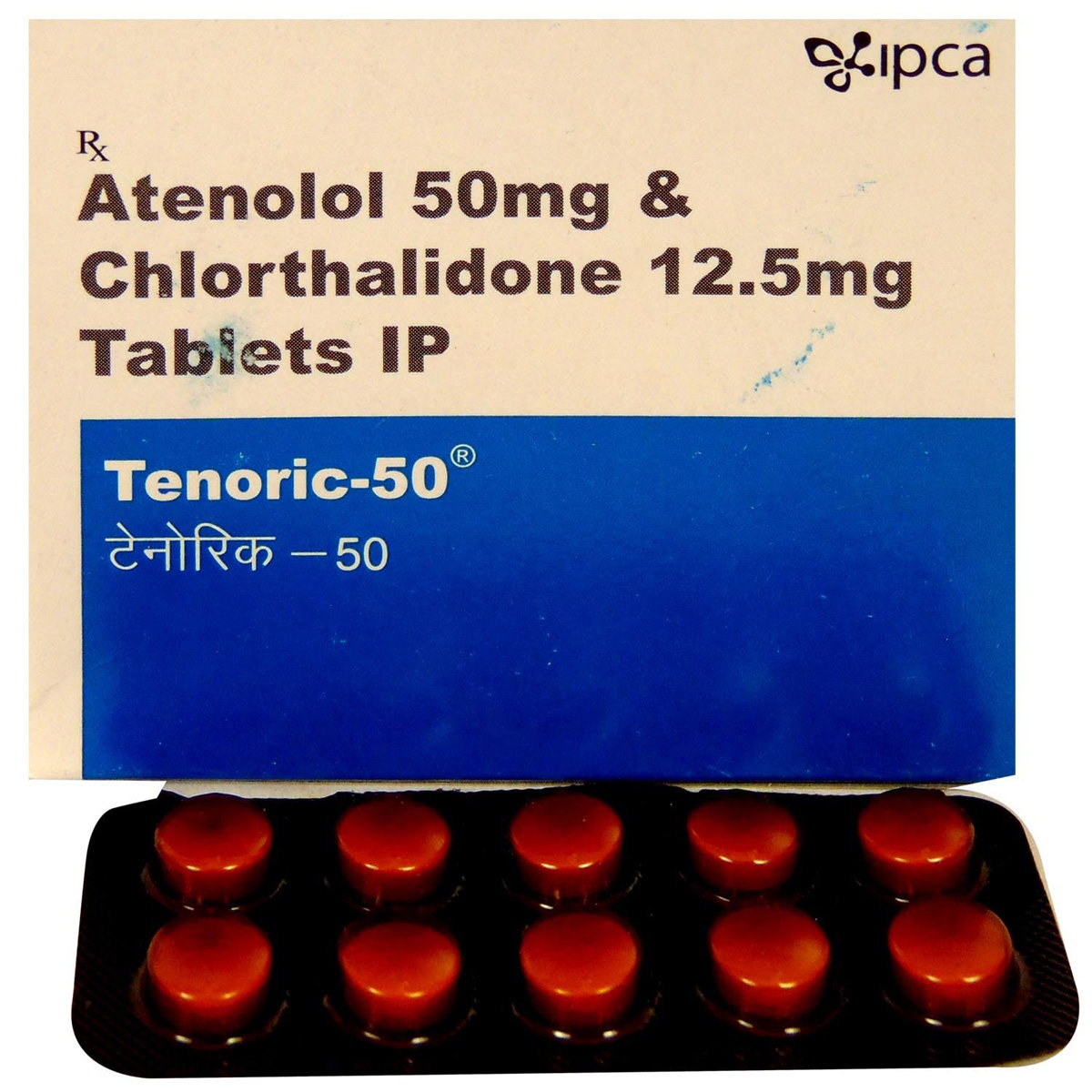


_0.jpg?tr=q-85)
